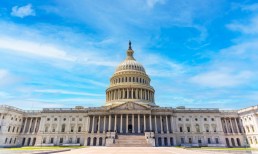Some consumers and businesses have gotten funds, while others are still waiting. Stories of error messages and technical glitches have abounded, and the Paycheck Protection Program (PPP) program directed at small and medium-sized businesses (SMBs) has already run out of money. Some reports suggest that, nationally, only 16 percent of the SMBs that applied for loans actually got one.
In short, it’s been a rough ride, perhaps rougher in execution than it really needed to be, Karen Webster noted in a conversation with Ingo Money CEO Drew Edwards about the stimulus disbursement efforts thus far. Edwards readily agreed, noting that for everything the government is, it is not a payments company, and was not set up at the outset of this crisis to crash-distribute $2 trillion to hundreds of millions of consumers.
In fact, he said, when it comes to payments, the government isn’t so much a single entity as it is “an amalgamated series of bureaucracies” that weren’t ever designed to work as a single, modern payments system. There isn’t a payment problem at the federal government level, he said, there are 85 payment problems — one for each individual department that has its own payment scheme with its own processes, rules and antiquated technology stack supporting it. (COBOL, anyone?)
“It shouldn’t be that way; I don’t know why it is that way. But now we have agencies trying to push all these payments out working on top of COBOL-based technology. The notion of being able to pivot wholesale to a modern disbursement system with payment choice, that is going to be a long-term project,” Edwards said, noting that COBOL doesn’t have application programming interfaces (APIs), so there is a lot of work to do from the ground up.
That wasn’t something agencies were able to do when the crisis was just spinning up — or during the current all-hands-on-deck period, Edwards noted. But they do have a choice this summer, when the world starts making baby steps back toward normal, about what they want to learn from the very difficult last few weeks — and what they want to start building right now to be better prepared going forward.
Advertisement: Scroll to Continue
Inefficient By Design
Given that the need for the massive distribution of relief funds was caused by an emergency in the form of a pandemic, the government might have considered handing off the task to FEMA, the resident experts. But while that might have made sense — since they’ve already integrated the technology that would have supported instant disbursements — that’s not what happened. Instead, said Edwards, they handed it off to the dual purviews of the IRS and the Bureau of the Fiscal Service.
“By law, [payments] like these are set up around a checks and balances system so that the IRS authorizes the payments and the Bureau of Fiscal Service distributes them. This is meant to be a system of dual controls, where the authority to decide to pay is intentionally divided from the group with the power to actually do the paying,” Edwards explained, noting that the slowest and most confusing process in corporate America has absolutely nothing on the federal government.
Moreover, he said, these systems are more than just tedious and cumbersome for users — they also create liability. In his conversations with his lawyers, he said, an outside possibility has emerged that mismanagement of PPP funds could have more serious consequences than just having to pay back a loan to the government. It could mean accidentally committing a federal crime.
“I have two lawyers who will certainly figure out how to keep us in compliance. But my window tinting guy who also applied for these funds? I am not as confident,” Edwards said.
And while there might not be much to be done for the current crisis but grit our collective teeth and push through as best we can, there is a lot that can be done for the next crisis.
Building Better For Next Time
The hope, of course, is that nothing like the COVID-19 pandemic ever happens again, and that we never have to enact a plan to pay out hundreds of millions at once to balance out an economy that has gone into a deep freeze. But given the lessons the last few weeks have taught the whole world, it would be smart for the federal government to start thinking about how to build a system that is better prepared for these types of pressures.
The reality is that while it may take a matter of years, not hours, to put the whole federal government into a modern payment platform, creating a system that could weather a crisis doesn’t require building a fix for 85 separate departmental silos.
The technology exists to, by the end of this year, build a disbursements platform that could function at the flip of a switch for an emergency payout situation — if the powers that be decide to invest the necessary focus.
“If the government said I want to start building a portal so everyone in America could log in, claim their money and decide how they want to be paid — I would need about 90 days to build that,” Edwards said.
With a few admittedly difficult caveats, he added. They would need a secure database of all the people they needed to pay, with an identifier such as a Social Security number and the amount of the payments. The government would also need bank support and a partner who is able to engage with consumers, authenticate them and pay those funds out in a way that’s “able to withstand every state-sponsored crook on the planet trying to game the system.”
A tall order, he noted, and one for which the government will need technical and financial support. But based on the events of the last few weeks, it is something that has to happen — because black swans will always appear from time to time. And it’s better to have a response ready to go than to have to create one in real time.



